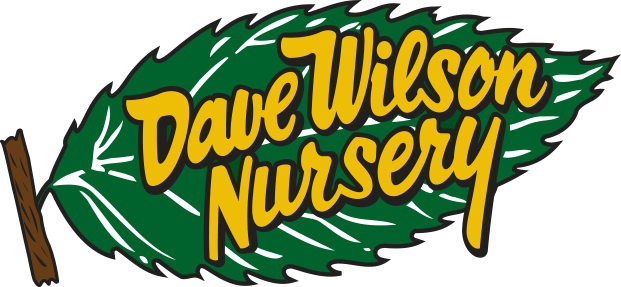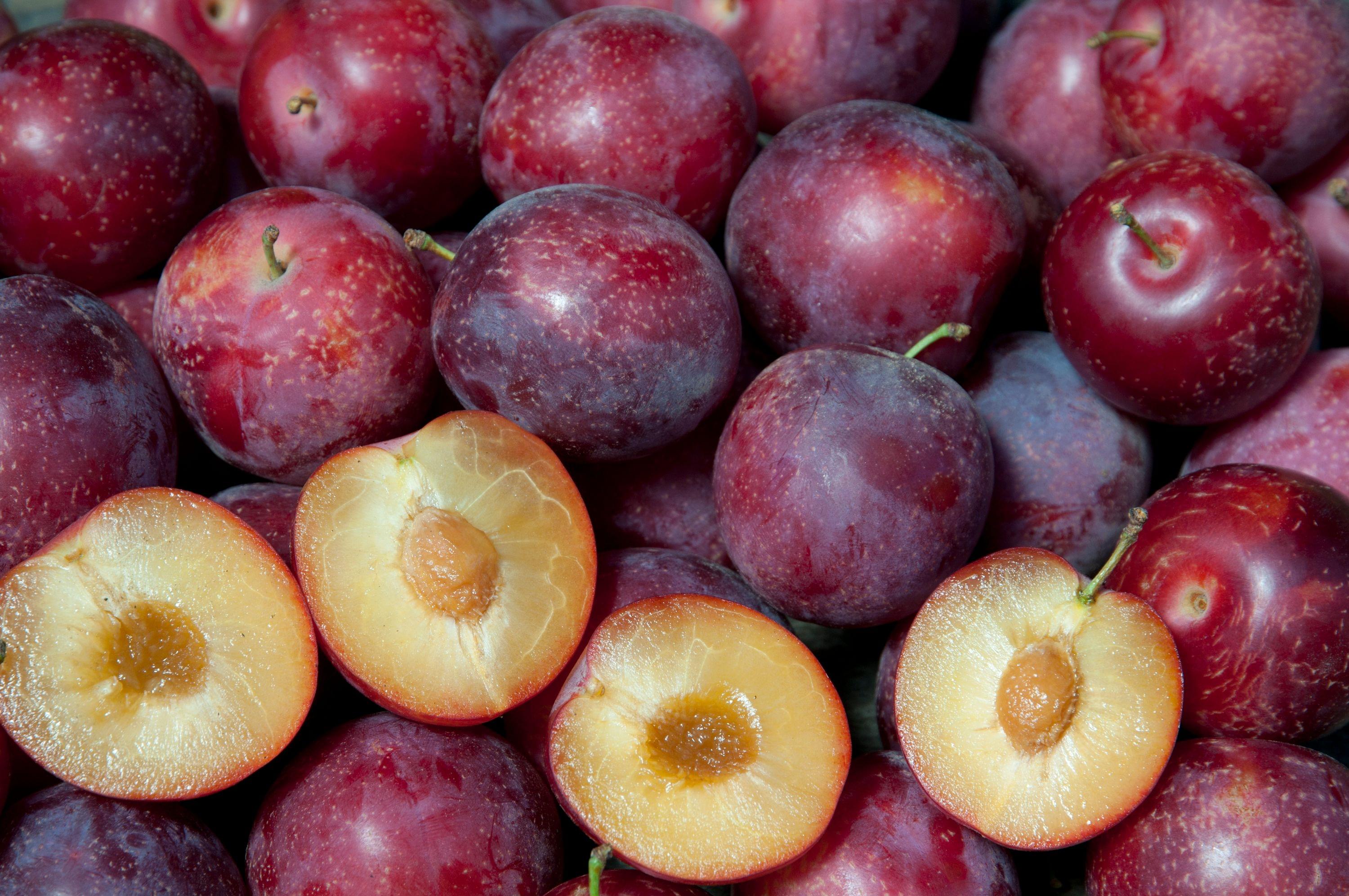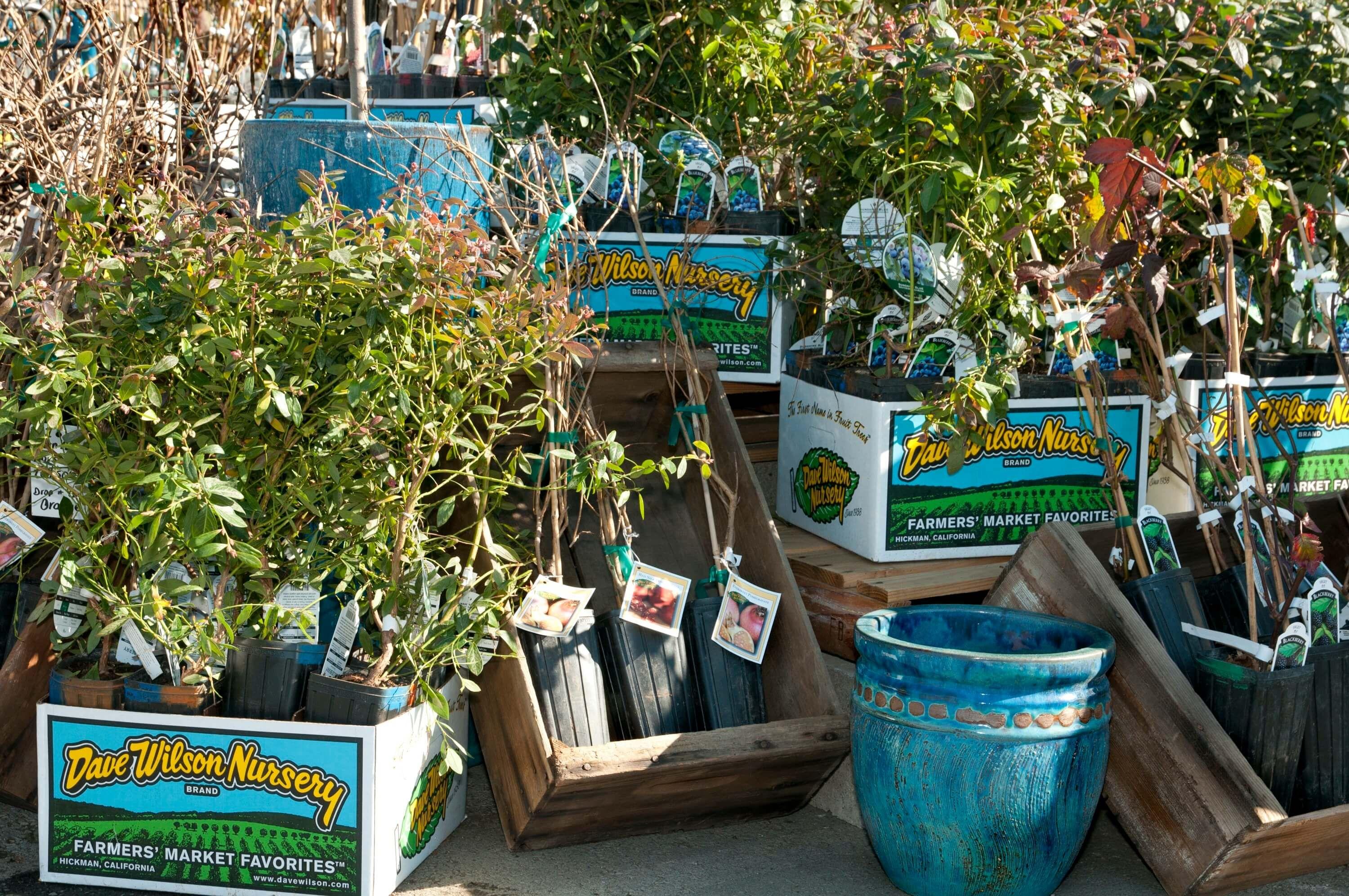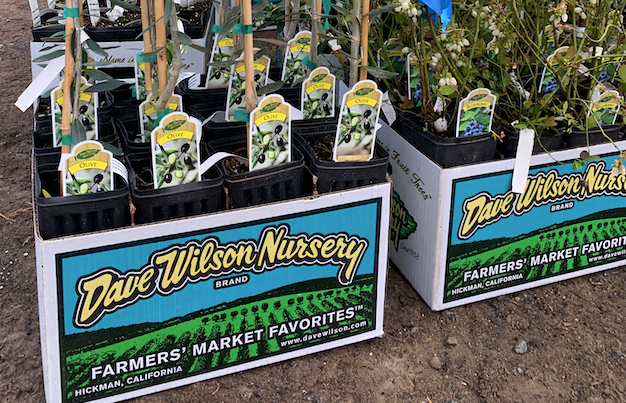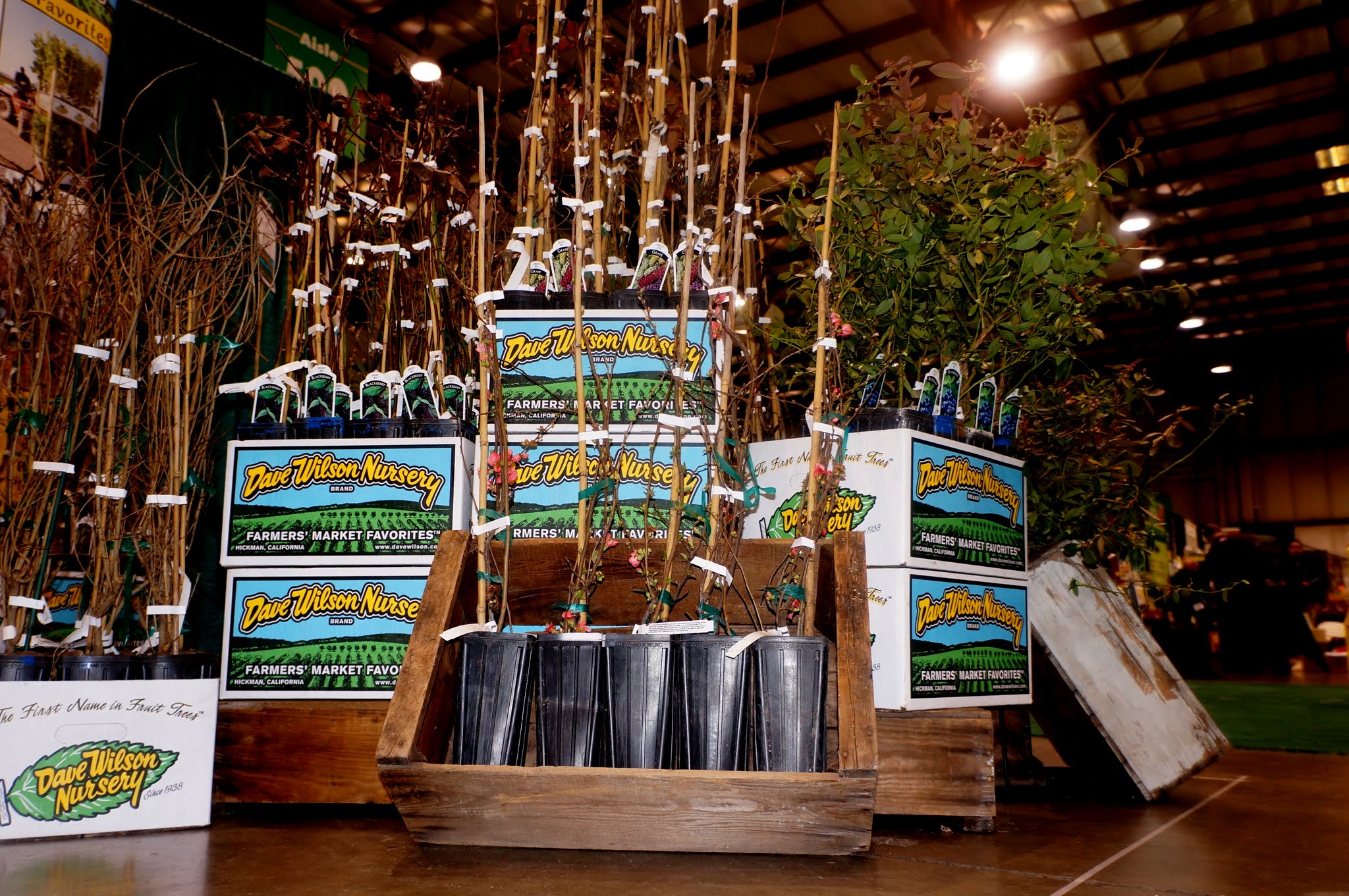Sell More Fruit Trees with DWN Sales Aids! Promotional Flyers What’s hot from The First Name in Fruit Trees™… This item will look good on the counter, on the wall or in the …
Times Have Changed, Customers Have Changed
Today’s ideal home orchard provides usable amounts of tree-ripe fruit over a long season.
Backyard Orchard Culture plants several or many fruit varieties close together. They ripen at different times for a longer harvest season. Summer pruning helps keep the trees small and manageable in the ever-shrinking, modern back yard. This is the Perfect Solution for backyards of any size and can give a family an abundance of fruit to eat fresh from the tree, embellished in the kitchen or preserved for future enjoyment.
Backyard Orchard Culture Means New Ideas, New Goals and Better Results
All areas of human endeavor are alive with new ideas and new knowledge. Improved techniques for doing practically everything give us more possibilities and options to apply to the limitations of the modern backyard.
Most of the ideas of Backyard Orchard Culture are not really new, but only need to be rediscovered and applied creatively. The ideas that go into selling Backyard Orchard Culture help customers to take a positive, optimistic approach toward limits on available space and time. These ideas lead to a more creative, productive backyard orchard.
Master The Principles Of Backyard Orchard Culture
To successfully apply the principles of Backyard Orchard Culture to fruit tree sales, you must first master them.
- Backyard Orchard Culture isn’t commercial orchard culture. It isn’t ladders, tractors, forklifts, and eighteen tons of fruit per acre. Trees aren’t planted twenty feet apart.
- Backyard Orchard Culture is high-density planting: lots of trees in a small area. It is the planting of hedgerows, espaliers, four trees in one hole, and multiple-budded trees.
- Backyard Orchard Culture is successive ripening: one variety after another — fruit all season long.
- Backyard Orchard Culture is summer pruning for size control.
- Tree size is the grower’s responsibility.
- Choose a size and don’t let the tree get any bigger.
- Dwarfing rootstocks can’t do the whole job.
- Backyard Orchard Culture is an ongoing dialogue between the backyard orchardist and You, the nursery professional.
- Backyard Orchard Culture is not being lazy or intimidated by pruning, thinning, and spraying. It is an attitude: “just do it!”
- Backyard Orchard Culture is the satisfaction of producing and the pleasure of sharing tree-ripe fruit.
Sell Backyard Orchard Culture to Increase Your Sales
When promoting high-density planting, start with the most aggressive (most profitable) strategies: four trees in one hole, or a hedgerow with 30 inches between trees. Then, if the customer is not receptive, work toward lower density: two trees in one hole, or trees six to eight feet apart in a row. The way to maximize the day’s sales is to maximize the sale to each customer (but without being pushy - the ultimate goal is the repeat customer).
The principles of Backyard Orchard Culture offer numerous ways to inspire your customers and increase your fruit tree sales. Find your own creative ways to employ the following:
- Trees can be kept as small as desired by summer pruning.
- With small trees pruning, spraying, thinning, netting and picking is easy.
- With small trees, small yards can accommodate more trees in more places than most people realize.
- With high-density planting and successive ripening, small yards can provide a longer harvest of more kinds of fruit than most people realize.
- With multiple-budded fruit trees, up to four varieties of fruit can be harvested from one tree.
- It’s easy to grow fruit trees flat against a wall or fence.
Inspire The Novice to Increase Your Share of Fruit Tree Sales
75% to 80% of your customers are novice gardeners or are attempting fruit trees for the first time.
To increase your market share, you must distinguish your nursery from others by introducing the novice to new ideas and possibilities. Challenge them to the philosophy and techniques of Backyard Orchard Culture - challenge them to try high-density planting and summer pruning. Inspire them to want a full season of tree-ripe fruit. Let them know that their limitations can only lead to new styles of growing.
Inspire The Misinformed to Increase Your Share of Fruit Tree Sales
How many people aren’t buying fruit trees and maintenance supplies from you because the fruit trees they now have are huge and the fruit makes a big mess?
They need to know about Backyard Orchard Culture! People who think they don’t have room for fruit trees, or who think fruit trees are hard to maintain, or who don’t know the difference between grocery store fruit and tree-ripe fruit, or who think they would have to put up 100 jars of fruit to justify having another tree - all need to know about Backyard Orchard Culture!
Good Sales Interactions Will Increase Your Share of Fruit Tree Sales
Fruit tree customers are not impulse shoppers. If they take the time to investigate the local nurseries, they will either buy at the last place they stop, take the cheapest price or where the sales interaction felt most comfortable.
Here are some ways to begin a good sales interaction:
- Find out what kinds of fruit they have in mind. If they are interested in a peach tree, ask if they would like to have peaches for three months instead of three weeks. Let them know that four trees can be planted in one hole. Be ready to show them four peaches that ripen one after another. Or three peaches and a nectarine. Or two peaches, a nectarine and a plum.
- Ask how much space they have for fruit trees. If they have a 10' x 15' area and they’re wondering if that’s enough room for one tree, tell them it’s easily enough room for six trees: four in one hole plus two espaliers.
- Let them know that summer pruning can keep a fruit tree under eight feet high.
- If they have a 10' x 30' area, tell them they could have fruit for six months by planting twelve trees 30 inches apart in a hedgerow, or by planting three sets of four trees in one hole.
- Experienced fruit growers who resist the high density approach are good candidates for Backyard Orchard Culture. Are they able to use the entire crop from their trees? Would they rather have the harvest spread over a longer period? Do they need a ladder for pruning, thinning and picking? Do they always get those tasks done? Would they like them to be easier? Inspire them to want lots of varieties of fruit in their yard, including some of the exciting new varieties. Challenge them to extend their experience by mastering the art of summer pruning, and by maintaining a fruit tree under eight feet high.
- Frequently, a customer comes to the nursery for a single fruit tree not realizing that it requires a pollenizer. This is a good point to enter into a discussion of Backyard Orchard Culture . If your customer says there’s no room for a second tree, you can explain how there is probably room for three or four and maybe six or eight trees! Or two multiple-budded trees with six to eight varieties!
A good sales interaction begins a long-term relationship when it informs, introduces, challenges and inspires.
Be Sure Your Customers Understand Pruning
Lots of delicious fruit from small trees is the customer’s motivation for adopting Backyard Orchard Culture. Pruning, especially summer pruning, is the key to success. Your customer’s success will give you word-of-mouth advertising and increased sales for your nursery.
- Fruit Tree Size Control Is The Customer’s Responsibility. The customer chooses a size and doesn’t let the tree get any bigger.
- Make Sure Your Customers Understand The Need For Pruning. Pruning is required to stimulate new fruiting wood, to remove dead and diseased limbs, to space the fruit, and to ensure good air circulation and sunlight penetration. Pruning is most important during the first three years. A good time to prune is when you thin the crop.
- Be Sure Your Customers Understand The Benefits Of Summer Pruning.Summer pruning is the easiest way to keep trees small. Summer pruning will reduce a trees vigor.
- Make Sure Your Customers Aren’t Intimidated By Pruning. It isn’t complicated or confusing if you know why it needs to be done.
- Consultation is essential: ask your customers to come to you with their questions. If you have the answers to help them succeed, you’ll gain their confidence and they’ll come back for more.
Even Single-Tree Customers Should Be Encouraged To Summer Prune
The key to developing long-term customers is promoting positive fruit tree experiences. Smaller trees are easier to spray, prune, thin, net, and harvest. A customer who learns how easy it is to keep a tree small by summer pruning will see that there is room for more trees after all.
Every sales interaction gives you the opportunity to remind your customer that a variety of trees can be planted close together and kept small by summer pruning. Encourage them to succeed. Show them your pruning shears.
Selling Backyard Orchard Culture Means Selling Tree-Ripe Fruit
There are many people who would become fruit tree enthusiasts if they were introduced to the world of tree-ripe fruit. Customers who don’t grow fruit or who only want one fruit tree may think they don’t like many kinds of fruit. Maybe that’s because they’ve never experienced tree-ripe fruit.
Sell The Excitement Of New Varieties
One of the most exciting aspects of growing and tasting fruit is the never-ending stream of new fruit varieties. Many varieties introduced five, ten, or even twenty years ago are still unfamiliar to most of the public, and therefore still “new.”
Plenty of people don’t know about Honeycrisp apple, Royal Rainier cherry, Harko nectarine, Emerald Beaut, Burgundy and Weeping Santa Rosa plums, Harken and O’Henry peaches, Tomcot apricot, the Arctic series of white nectarines, Snow Beauty white peach Necta Zee miniature nectarine, and Asian pears.
New varieties don’t sell themselves. Be alert for all opportunities to share the excitement of new varieties. A customer who likes sweet fruit with no tartness should be told about the new super-sweet, low-acid white flesh nectarines (Arctic Jay, Arctic Sweet, Arctic Rose, Arctic Star). And, of course, any customer interested in plums or apricots should be introduced to the Aprium® and Pluot®!
Sell The Taste Test Winners
The Dave Wilson Nursery Fruit Tasting Report is a tool that every sales person can use. Since you aren’t always able to taste-test new varieties, sell your peers' fruit taste ratings.
Sell the 1993-94 taste test winners: Flavor Supreme Pluot®, Arctic Supreme white peach, Loring peach, Heavenly White nectarine, Weeping Santa Rosa plum, Fantasia nectarine, Double Delight nectarine, Arctic Rose white nectarine, Independence nectarine, and Mid-Pride peach. (What wonderful varieties all those early taste winners still are!)
Sell the 1995-2010 taste test winners, including Arctic Jay white nectarine, Flavor King Pluot®, Dapple Dandy Pluot®, Craig’s Crimson Cherry, Emerald Drop Pluot®, Snow Beauty white peach and Indian Free white peach - plus all the locally adaptable varieties on the Fruit Tasting Report’s chart “Harvest Dates of Top Scoring varieties”.
Your Biases In Fruit Should Not Be An Obstacle In Selling Fruit Trees
Personal experience can be very helpful in making fruit tree recommendations.
However, be careful: don’t put too much weight on your own negative experiences with fruit.
People have different tastes, experiences and expectations. Some people don’t like any tartness in fruit, while others do. Some people are more sensitive to subtle flavors.
Opinions derived from commercially-harvested fruit may not be relevant.
Fruit from grocery stores, fruit stands and farmers' markets is often picked before it’s fully ripe so it can be handled and processed without bruising. How and where fruit is grown and when it is picked can be as important as the variety!
Product Knowledge Is The Key To Creating Sales Opportunities
The more you know about a product, the more ways there are to sell it.
Sales often depend on answers to questions coupled with your timely suggestions. Opportunities can come and go quickly when you don’t have much time to spend with each customer or to look things up.
The sales person who is most informed will make the most out of a five or ten-minute sales interaction.
Sell With A Plan, Be A Professional
Learn different ways to begin and guide conversations about high-density planting, successive ripening and summer pruning. Leading a customer to the fruit trees and helping them read the labels isn’t a plan.
Suggestion: your nursery should prepare lists of recommended high-density planting combinations for your climate.
Four-trees-in-one-hole combination: four fruit varieties that ripen at different times. Maybe several four-trees-in-one-hole combinations. You should also have a recommended ten-tree hedgerow combination with ten different ripening times. Most customers would be more responsive to a suggested combination than to the prospect of doing it themselves. It’s easier to modify than to start from scratch. The more help you give your customers, the more likely they are to follow through.
Be a good listener, learn how your customers think, learn what ideas elicit a positive response from them. Learn to make the most out of every sales interaction.
When ending any discussion with a customer, feel confident that you have planted seeds for further thought. Sometimes customers aren’t responsive to ideas until they’ve had time to think about them. Let them know you’re there to help in any way you can.
Set goals for yourself - product knowledge goals, daily or weekly sales goals, competitive goals (sell more fruit trees), interaction goals (create and practice new techniques to interest people in Backyard Orchard Culture). Discuss horticultural sales with other nursery professionals.
Conduct yourself in a professional manner.
Take advantage of all opportunities to expand your product knowledge.
Be accurate and reliable with information. Always keep your promises.
Sell with a plan to attract more long-term customers and you’ll make more sales.
Product Highlights
Related News & Events
Contact Dave Wilson
We sell our products to retail nurseries, garden centers, container growers who sell to landscape contractors and retail nurseries, mail order nurseries, and anyone else who qualifies. We do not accept direct sales to consumers.
